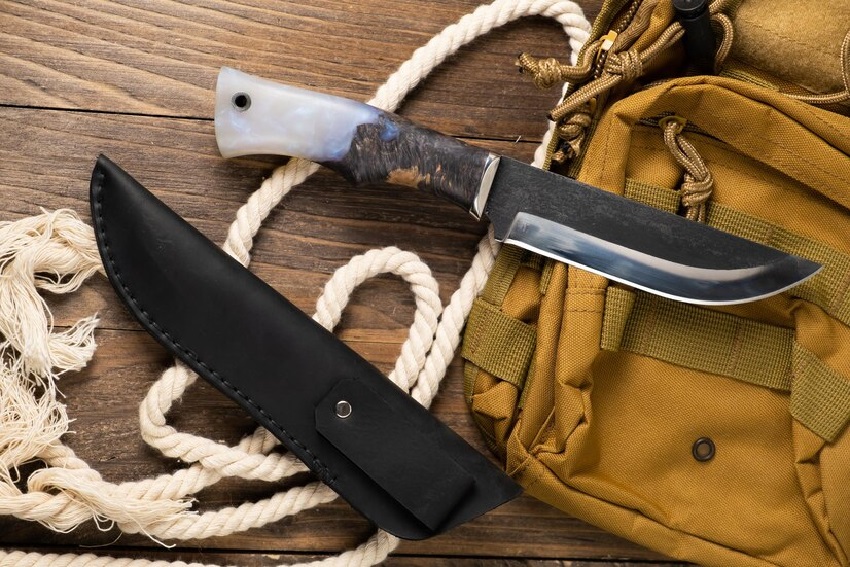For any seasoned chef or culinary enthusiast, the choice of tools in the kitchen is paramount. Among these, the wood handle fixed blade knife stands out for its exquisite craftsmanship and enduring functionality. This knife is not just a tool; it is an extension of the chef's hand, offering the perfect blend of tradition and modern utility. Discover why this age-old tool remains a staple in the kitchens of professionals and enthusiasts alike, and learn about its benefits that cater to the demands of expert culinary practices.

The Art Behind the Wood Handle
The choice of a wood handle in a fixed blade knife goes beyond aesthetics. It reflects a dedication to quality and performance. Wood, as a material, provides a comfortable, ergonomic grip that adapts to the hand over time. This natural material enhances the knifes balance and control, crucial elements for precision and safety in the kitchen. Moreover, the unique patterns and grains of wood impart a personalized touch to each knife, making it as unique as the chef who wields it.
Benefits of a Fixed Blade Design
The fixed blade design is revered for its strength and reliability. Unlike folding knives, a fixed blade has fewer moving parts, which minimizes the risk of malfunctions during rigorous culinary tasks. This stability is particularly important when performing intricate tasks such as deboning or slicing delicate vegetables. The seamless transition of power from handle to blade ensures that each stroke is efficient, controlled, and precise.
Why Kitchen Professionals Prefer Fixed Blades
Kitchen professionals often opt for fixed blades due to their superior strength and their ability to withstand rigorous daily use. The seamless design without hinges provides better hygiene as there are fewer crevices for food particles to get trapped, thus reducing the potential for bacterial growth.
For those interested in exploring the variety of options available, the anatomy of fixed blade knives offers a comprehensive guide to understanding the essential components and benefits of these knives.
Choosing the Right Wood Handle Fixed Blade Knife
When selecting a wood handle fixed blade knife, it is important to consider factors such as the type of wood, the blade material, and the overall design. Popular wood types include olive, rosewood, and walnut, each offering different benefits in terms of durability and appearance.
Blade Material Matters
The blade's material significantly impacts its performance and longevity. High-carbon stainless steel is preferred for its sharpness and rust resistance, whereas Damascus steel is appreciated for its unique pattern and robust cutting capability. You can learn more about Damascus steel options to make an informed choice for your kitchen needs.
All You Need to Know About Handle Types
If you are intrigued by unconventional materials, check out this exploration of unique knife handles to discover the variety available beyond wood.
Maintaining Your Fixed Blade Knife
Caring for a wood handle fixed blade knife is essential to preserve its beauty and functionality. Regular oiling of the wooden handle can stave off cracking and promote moisture resistance. Meanwhile, honing and correctly sharpening the blade will ensure it remains a trusted ally in the kitchen.
For tips on maintaining different types of knife handles, explore the detailed insights on Micarta handle maintenance.

FAQs
Why choose a wood handle over synthetic materials?
Wood handles provide a natural feel and exceptional grip comfort, which enhances the tactile experience. They also offer a visual appeal that synthetic materials cannot easily replicate.
Can I use a wood handle knife for all kitchen tasks?
Absolutely! A well-crafted wood handle fixed blade knife is versatile and suitable for a wide range of kitchen tasks, from chopping and slicing to more delicate procedures like filleting fish.
How do I maintain my wood handle fixed blade knife?
Regularly oil the handle to prevent it from drying out and store the knife in a sheath or dedicated knife holder to protect the blade. Sharpen the blade as needed to ensure it performs optimally.
This article contains affiliate links. We may earn a commission at no extra cost to you.


























